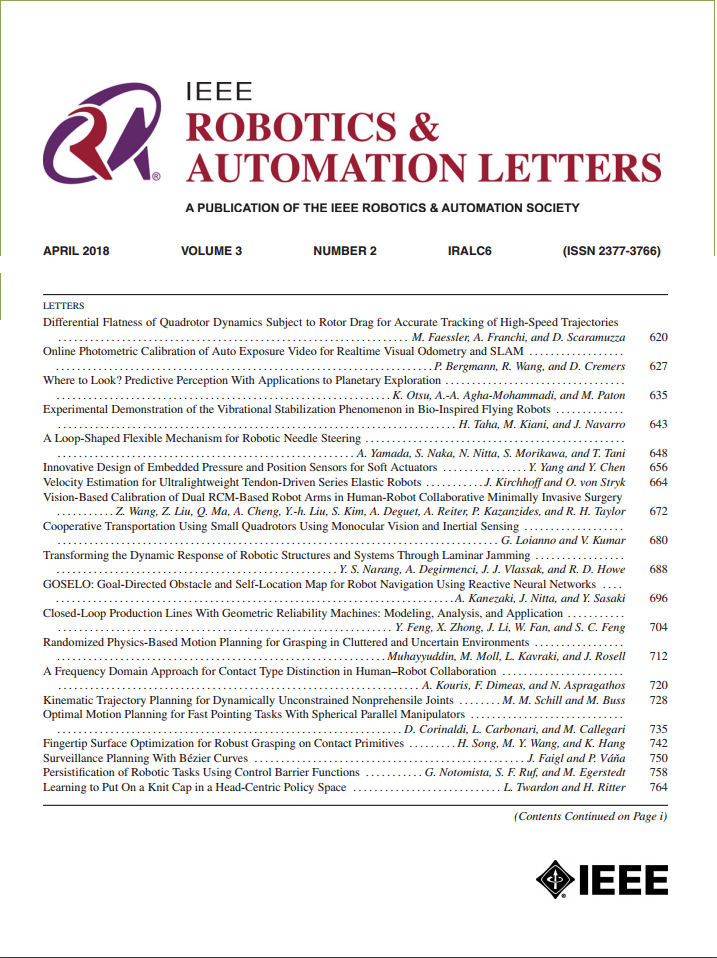Bundle Adjustment With Backtracking Line Search on Manifold
IF 5.3
2区 计算机科学
Q2 ROBOTICS
引用次数: 0
Abstract
Bundle adjustment (BA) is a fundamental problem in visual 3D reconstruction. The Levenberg-Marquardt (LM) algorithm, a trust region method, is widely regarded as the gold standard for solving BA problems. In each LM iteration, the current solution is updated by an increment vector derived from solving a linear system with a damping factor to regularize the step size. However, directly applying this increment may fail to reduce the reprojection cost. To address this problem, the LM algorithm employs a trial-and-error strategy. Specifically, it repeatedly solves the linear system with an increasing damping factor until the cost decreases. This process leads to invalid iterations. Since solving the linear system is typically the most time-consuming step and a large damping factor limits the step size in the subsequent iterations, this strategy wastes computational resources and slows down convergence. However, this issue has received little attention in prior research on BA. On the other hand, line search offers an alternative technique to control the step size, however, its application to BA remains underexplored. This letter presents a simple yet effective solution to overcome the limitation of the LM algorithm. We introduce on-manifold backtracking line search into the LM algorithm to accelerate convergence. The Armijo condition is adopted to ensure a sufficient decrease in reprojection cost. We show that the Armijo condition on manifold can be efficiently computed in the LM framework. By fusing line search and the LM algorithm to control the step size, our method effectively reduces the number of invalid iterations and improves convergence speed. Extensive empirical evaluations on both unstructured internet image collections and sequential image streams show that our algorithm converges significantly faster compared to state-of-the-art BA algorithms.集形上带回溯线搜索的集形调整
束平差(BA)是三维视觉重建中的一个基本问题。Levenberg-Marquardt (LM)算法是一种信任域方法,被广泛认为是解决BA问题的金标准。在每次LM迭代中,当前解通过求解具有阻尼因子的线性系统得到的增量向量来更新,从而使步长正则化。然而,直接应用这个增量可能无法降低重投影成本。为了解决这个问题,LM算法采用了一种试错策略。具体地说,它反复求解一个阻尼系数不断增加的线性系统,直到成本降低。这个过程会导致无效的迭代。由于求解线性系统通常是最耗时的步骤,并且较大的阻尼因子限制了后续迭代中的步长,因此该策略浪费了计算资源并减慢了收敛速度。然而,这一问题在以往的BA研究中很少得到重视。另一方面,线搜索提供了一种控制步长的替代技术,然而,它在BA中的应用仍未得到充分的探索。这封信提出了一个简单而有效的解决方案,克服了LM算法的局限性。我们在LM算法中引入了流形回溯线搜索来加速收敛。采用Armijo条件以确保充分降低重投影成本。我们证明了流形上的Armijo条件可以在LM框架下有效地计算出来。该方法通过融合线搜索和LM算法控制步长,有效减少了无效迭代次数,提高了收敛速度。对非结构化互联网图像集和顺序图像流的广泛实证评估表明,与最先进的BA算法相比,我们的算法收敛速度要快得多。
本文章由计算机程序翻译,如有差异,请以英文原文为准。
求助全文
约1分钟内获得全文
求助全文
来源期刊

IEEE Robotics and Automation Letters
Computer Science-Computer Science Applications
CiteScore
9.60
自引率
15.40%
发文量
1428
期刊介绍:
The scope of this journal is to publish peer-reviewed articles that provide a timely and concise account of innovative research ideas and application results, reporting significant theoretical findings and application case studies in areas of robotics and automation.
 求助内容:
求助内容: 应助结果提醒方式:
应助结果提醒方式:


